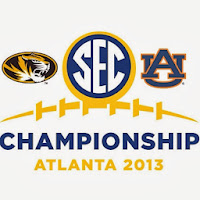Editor's Note: This post was first published on our sister blog (www.finleyriver.com) because of the satirical nature of its content.
NFL Commissioner Roger Goodell announced this morning that the Kansas City Chiefs B Team will replace the San Diego Chargers in this weekend’s opening round of the AFC Playoffs.
The League cited several reasons why it decided to override its own formula for choosing which six teams would represent each conference in the quest for this season’s Super Bowl, to be held February 2 in New Jersey. “After reviewing the film of yesterday’s game in San Diego, we believe it would be an insult to the integrity of professional football for the San Diego Chargers to represent the American Football Conference in this year’s wildcard playoff game,” said Goodell, reading from a prepared statement.
The Chiefs, with its fifth seed sealed, gave the Chargers every opportunity to route them in yesterday’s game, but the San Diego club took advantage of none of them, barely escaping with a tainted 27-24 OT victory on their home field. The Chiefs played its scout team and did not even activate many of its eight pro bowlers.
What’s more, the Chiefs denied their starters a pre-game meal and withheld Gatorade until the game reached overtime. “We did everything in our power to give them the game except to take a knee,” said Chiefs’ coach Andy Reid in assessing the loss. “I’m not sure what more we could’ve done. You know, we don’t much like Todd Haley and all but we had to make it look like we were at least trying so as not to insult the Steelers. Shoot, our scrubs made that redneck Philip Rivers look like he was wearing a tutu out there,” exclaimed Reid. “I was like ‘Phil-take a valium and put on your big boy pants,’” he said as he shook his head laughing.
The Chargers could not take advantage of any of the Chiefs charity, but instead were forced to rely upon errors from the officiating crew, which it was later determined to be a holdover “scab crew,” from last year’s referee strike. “The zebras clearly blew two calls,” said Goodell in a departure from his prepared remarks. “The Chiefs kicker (Ryan Succop) should’ve gotten another chance to make a 36 yarder at the end of regulation because of that illegal formation, and then I don’t know what they were thinking when they gave the ball back to the Chargers on that fake punt in O-T,” admitted Goodell. “In my book, that was either a fumble/T.D./Chiefs’ win or Chiefs ball on the San Diego 22. Either way, ‘Good Night Chargers!’”
“While the NFL acknowledges that this decision is both unorthodox and certainly controversial,” read Goodell as he returned to his script, “we believe it is in the best interests of this game we all love to implement this decision.” He continued: “It would be an absolute joke for those sissy Chargers to go to Cincinnati Sunday to take on the 11-5 Bengals. I’m sorry, but if those pantywaists in San Diego can’t convincingly beat a bunch of rag tag B-teamers, then what in the world will Andy Dalton and the Bengals to them?” he said. “That’s simply not going to happen on my watch.”
Many around the NFL were immediately critical of the League’s decision because it did not choose the Steelers to take the Chargers’ spot, instead giving the nod to the Chiefs’ second string. When asked about that, Goodell, clearly annoyed, simply stated: “Bottom line—we chose what we thought was the best remaining available squad from what we had to pick from. This decision was about putting the best 22 guys on the field against the Bengals. Period. No more, no less. I can’t involve myself in conjecture and ‘what-ifs?’ If Rooney’s boys had taken care of their own business we would not have had to step in. Let them go cry on their collection of Lombardi trophies,” said Goodell.
The Chiefs’ Reid was clearly pleased with the NFL’s decision, which will allow him to coach games on consecutive days this weekend and allow backup QB Chase Daniel additional meaningful work. “I think our staff is up to the task,” said Reid. “We’ll practice like we always have—starters vs. scout—during the week. We’ll all head to Indy Friday, then the J.V. will bus to Cincy at halftime Saturday. Both squads will be without backups but hopefully we’ll remain injury-free,” said Reid. “The only other thing we’ve got to figure out is how to get Ryan (Succop) and Dustin (punter Colquitt) down to Paul Brown (Stadium) by noon Sunday,” he said. “We’re essentially approaching this like the Royals do a split squad game out in Spring Training,” said Reid.
The NFL declined to meaningfully address the possibility that the Chiefs’ first and second strings could play each other for the AFC Championship January 19. “There’s a lot of football to be played between now and then,” said Goodell. "Let's not get too far ahead of ourselves."
He paused, then added: “I can tell you one thing for certain: If the Chiefs end up essentially having an intrasquad scrimmage for the AFC Title, then that game will definitely be played at Arrowhead Stadium in Kansas City,” he said.


